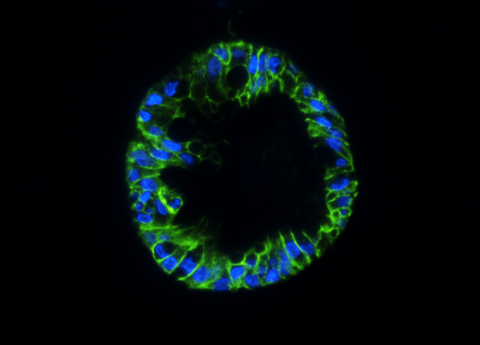Could ‘organoids’ help optimise rabbit virus management?
Rabbit caliciviruses don’t currently grow in conventional cell cultures and this means that to understand their virulence, genetic makeup and thus optimise their effectiveness, experiments need to be done in live animals which can be laborious and expensive.
Recently, the CSIRO-led rabbit biocontrol team received funding from Meat and Livestock Australia to undertake ground-breaking research to see whether ‘organoids’ can be used to better understand how rabbit caliciviruses work at a cellular level, and finally grow these viruses in culture.
Since human gut caliciviruses (AKA noroviruses) were shown to grow in human intestinal organoids, it was thought that the rabbit gut calicivirus (RCV-A1) should also grow in rabbit intestinal organoids.
“We were able to grow the organoids successfully and they contained all the major cell types found in the rabbit small intestine, demonstrating that this system is biologically relevant”, said Dr Robyn Hall, CSIRO veterinary virologist.
However, while significant progress was made, the team hit some hurdles, as discussed in their latest research paper published in the Journal Scientific Reports.
“We were still unable to grow RCV-A1 in these organoids,” Dr Hall said.
This suggests that the target cells of infection may not be any of the major cell types present in the rabbit intestinal organoid culture, highlighting that more research is needed to better understand the basic biology of these viruses.
“We chose to start with RCV-A1 and intestinal organoids because it was, in theory, a smaller step from the human calicivirus-intestinal organoid system.
“However, the main goal is RHDV and research is currently underway to establish rabbit liver organoids, which we will then use to try to culture RHDV1 and RHDV2, Dr Hall said.
If successful, these organoid culture systems would greatly increase our understanding of these viruses and allow researchers to reduce the number of live rabbits used, as well as facilitating translational studies.
“For example, we could look at the mechanisms underlying genetic resistance in different populations, since organoids retain the host genetic characteristics (such as disease susceptibility) of the donor.
“This is why they are being widely developed for personalised medicine in humans,” Dr Hall said.
You can learn more about this project via https://research.csiro.au/rhdv/
The CSIRO rabbit biocontrol research team works with our Centre to progress our rabbit biocontrol research program and you can learn more about this here – https://invasives.com.au/research/national-rabbit-biocontrol-optimisation/





